Everyone remembers the heart-wrenching and tragic photos of Hurricane Katrina’s cataclysmic effect on New Orleans in 2005. In the eight years since that calamitous storm, you may have moved on with your life and forgotten just how devastating the damage was, but the people of New Orleans, and especially those who live in the 9th Ward will never forget. I was in New Orleans this past week and spent an afternoon in the 9th Ward viewing the recovery progress, and in many cases, the lingering damage.
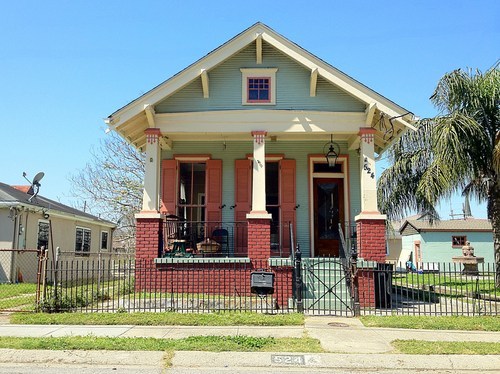
Scattered throughout this hard-hit neighborhood and Holy Cross (its neighbor to the south), among the more prevalent Queen Anne and Eastlake Victorians, are hundreds of bungalows. These gable-ended homes with dominating craftsman details share a common trait with their more ornate cousins – they’re almost always laid out with a “shotgun” floor plan.
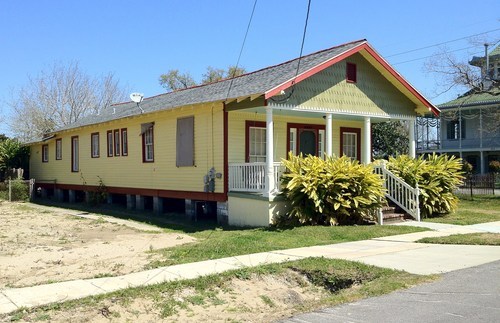
The “shotgun” house, which is one room wide and several rooms deep without any halls, was so-called because if you opened the front door “you could shoot a shotgun straight through every room in the house.” The design was wildly popular in New Orleans because the city’s original property tax structure was based on the amount of street frontage a property occupied.
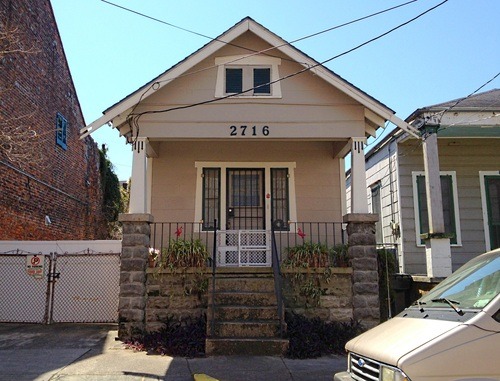
A narrow, deep floor plan meant builders could fit more homes on a given block, and property owners would save money on property taxes – without necessarily having to sacrifice square footage.
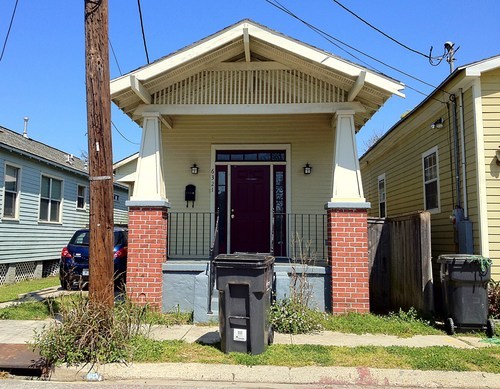
In many cases, these houses were designed as a duplex (below) – also known as a double-barrel shotgun or more simply, a shotgun double – where two mirror-image units were built under one roof. This allowed for even more densely built blocks of homes and contributed to this neighborhood’s tight sense of community.
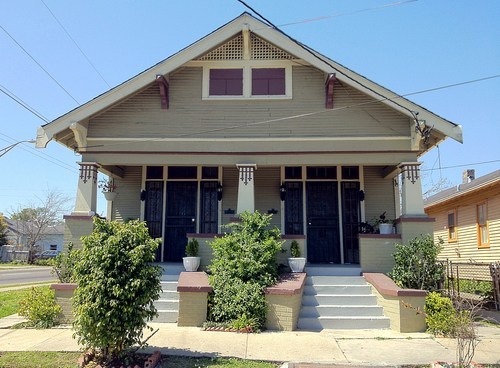
Depending on what part of the 9th Ward the house was in, following Katrina’s wrath and the subsequent levee breaks, there would have been anywhere from four to ten feet of floodwater. None of these homes had basements, and instead of foundation walls, most were originally built on a network of brick piers. That meant that there would have been at least one foot, and in most cases several feet of floodwater inside these houses.
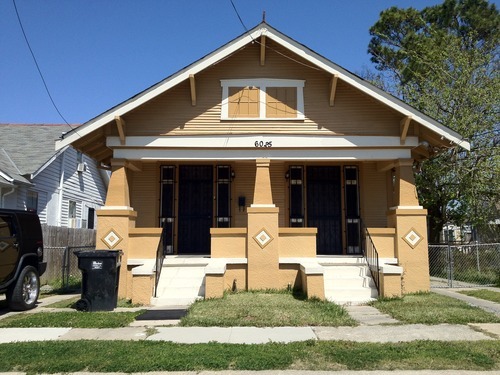
Seeing these homes today, it’s difficult to imagine how horrific the scene must have been during those dark days, weeks, and months that followed in Katrina’s wake. Some areas were hit harder than others, and as I drove up and down the neighborhood’s gridded streets, it was not uncommon to see fully restored homes right next to completely dilapidated ones (below).
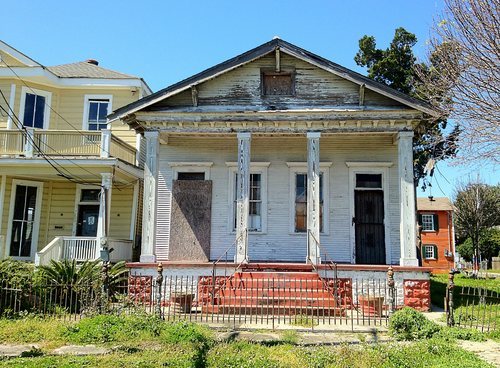
But it was comforting to hear the constant whir of a circular saw and the incessant thump of a hammer everywhere I went. Whether it was a shotgun double or single or a more traditional cottage, people have come back and are rebuilding. That may be surprising given the fact that it’s been nearly eight years since the hurricane, but not when you consider that roughly 2/3 of the 9th Ward’s residents left after Katrina and never came back.
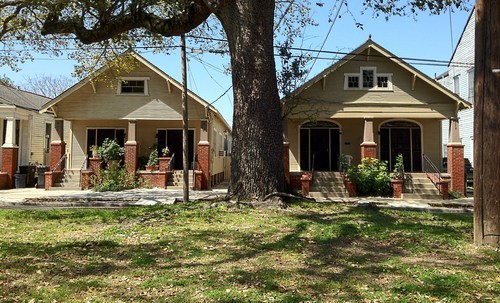
As I drove down one particular street in the Holy Cross neighborhood, purely by coincidence, I happened upon this shotgun single (below) with a camelback that sits about 100 yards from the Mississippi River levee. When I saw the gate leading into the sideyard of this corner lot, it seemed oddly familiar to me, even though I’d never been to this part of town before.

Then it dawned on me – this was the New Orleans project house for Season 29 of This Old House! It’s hard to believe that this house was once flooded with three feet of water which would have put the water level at about halfway up those shutters on the front door. For a quick tour of the home before restoration efforts began, check out this video…
The home was expanded and a “camelback” was added to the second floor (below). It was called a camelback for obvious reasons and was either an original part of a home, or as was the case with this house, an addition. To see the finished interior of this old house, click here.
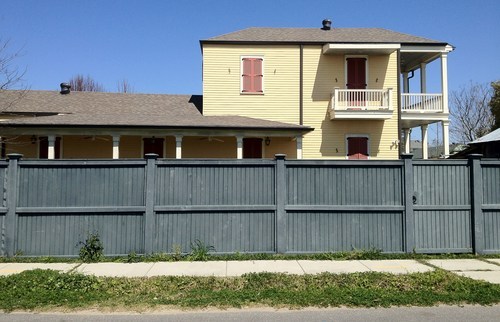
Not more than 100 yards away from that house was this rather peculiar looking one (below). The home, which dates back to 1905, was built by Milton “Paul” Doullut, a Mississippi River steamboat captain, and was designed to mimic the look of an actual steamboat. A promenade deck encircles the entire second floor and the wheelhouse, with its 360 degree views of the river and all of New Orleans, sits above that.
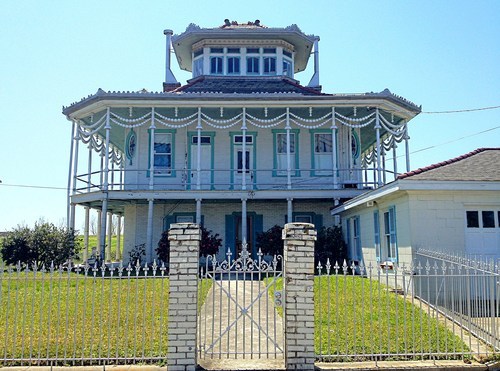
This Old House was able to get a tour of the home (see the video below) from one of its former residents, Don Gagnon. Gagnon is a fourth generation steamboat captain and happens to be the great-grandson of Paul Doullut. The home has been in the same family for its entire existence, and its’ foundation of brick and mortar helped it survive the hurricane.
If you can believe it, there are actually TWO of these remarkable homes. The second one (below), which sits just down the street, was built in 1913 for Doullut’s son, Paul Jr., who was also a steamboat captain. Referred to today as the “Two Sisters”, they were designated as historic landmarks in 1977 and are popular with architecture enthusiasts the world over. Paul Jr’s home today is owned by Emile Dumesnil who, after returning back home months after Katrina hit, helped many of his neighbors get back on their feet after their homes were either severely damaged or completely destroyed.
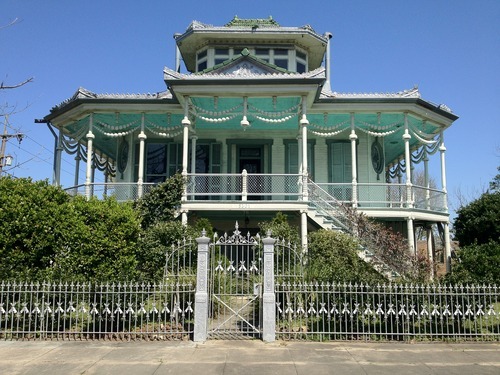
This tightly knit community has been through a lot since Katrina, and while it’s truly great that This Old House and many others have come down to the 9th Ward to help rebuild the neighborhood’s many storm-ravaged homes, not every home has been so fortunate. Everywhere you look there are constant reminders of the storm’s assault.
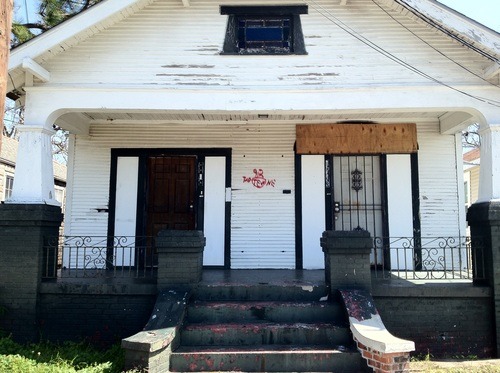
Many homes remain boarded up and still bear the spray-paint markings (above and below) of the date they were searched for survivors and a code designating if and where anyone was found alive or dead inside.
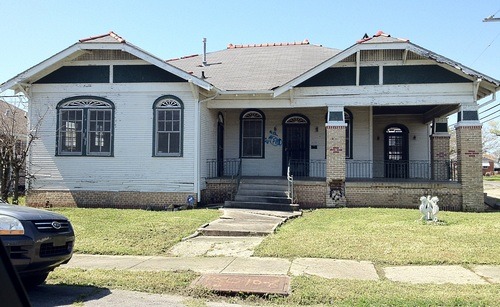
These markings are considered by many to be a badge of honor and throughout the neighborhood they’ve been left in place to immortalize those who lost their lives in the storm’s wake. One particular home (below) that’s been rebuilt and raised up onto a proper foundation, has even kept it’s original facade to memorialize the damage that was wrought here.
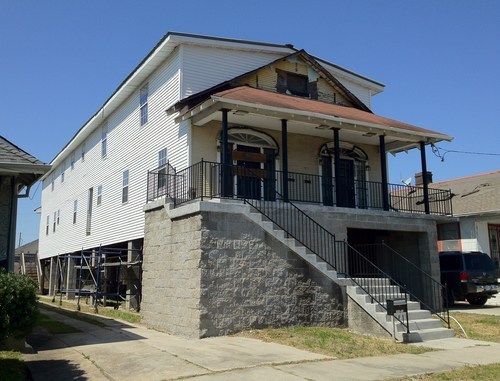
Other homeowners have turned to social media to help fund their restoration efforts. The savvy owner of the home below has started a crowd-sourcing effort for funding, as well as a facebook page to document the specific needs and progress of her restoration. It’s a great idea when you consider that donations received by larger organizations don’t always filter down to individual people, and when they do, it may take a very long time.
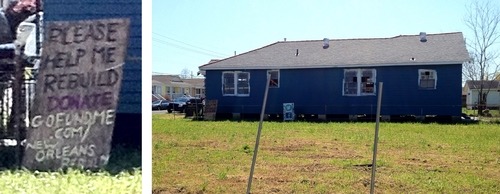
Still other homes remain in the same condition that they’ve been in since the storm hit and sadly, many were looted of their useable contents before being boarded up.
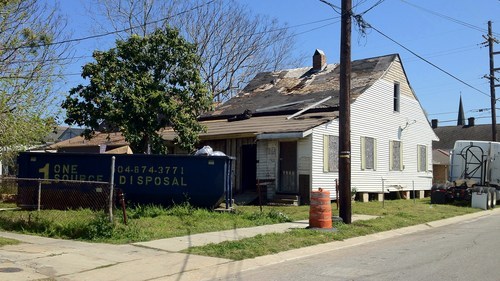
High winds ripped the roofs off many of these homes and rainwater now pours in through the holes, further weakening the building’s stability.
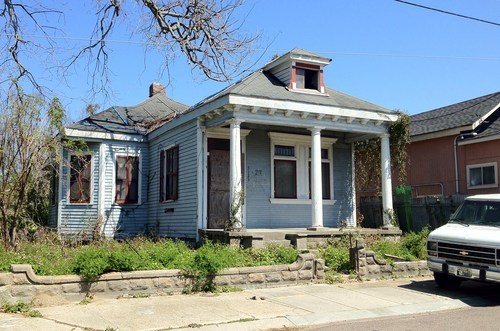
If the high winds didn’t tear holes in the roof, the floodwater that remained for weeks completely rotted the walls leaving gaping holes everywhere.
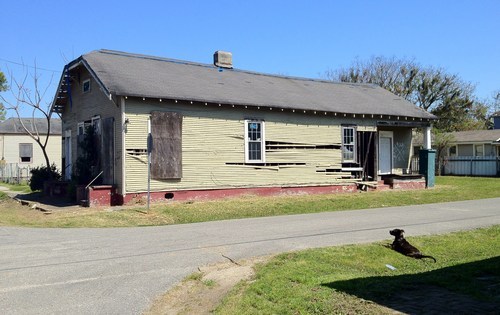
The home below barely has any walls left at all on its front room and quite honestly, it’s a miracle that it’s still standing.
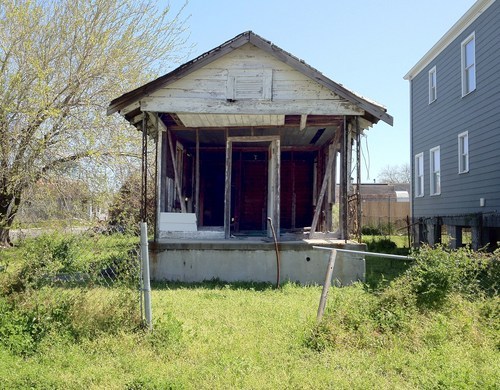
The home below and many more like it were not so lucky.
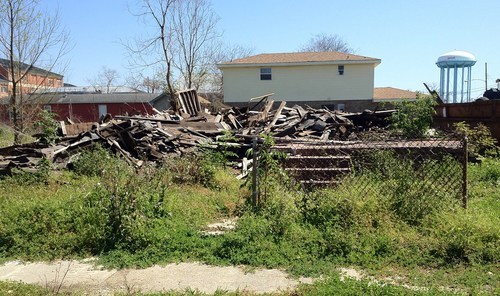
If you’ve never been, by all means, I urge you to go visit New Orleans. It truly is an incredibly beautiful, vibrant, resilient town – and not to mention tremendously fun. The history, the architecture, the culture, and especially the food are all world-class and definitely worth coming for on their own…
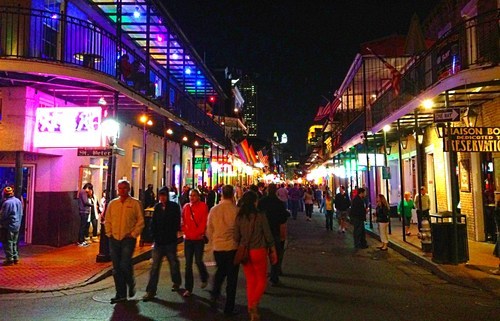
But do yourself a favor: after you’ve spent a night or two on Bourbon Street and another night bar-hopping through the jazz clubs on Frenchmen Street, take an afternoon, or even a couple hours, to get out of the French Quarter and visit some of the neighborhoods that took the brunt of Katrina’s fury. I promise that you’ll come away from it with a deeper appreciation for what this city – and these people – have been through, and how far they’ve all come.
Vive La Nouvelle Orleans!!








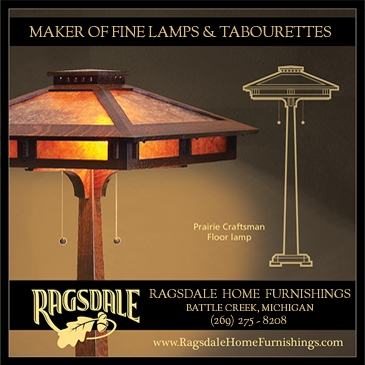
4 comments
elise says:
Dec 31, 2013
I had not read this article before and I am so glad I had the opportunity to do so as part of the Best Articles of 2013. It was very powerful to see the range of recovery and read the different stories. I love the eye candy that I get with American Bungalow, but what really appeals to me are the stories of perseverance and pride attached to the survival and preservation of old houses. Thank you so much for sharing this!
NOLANative says:
Jan 1, 2014
This article is not very accurate in explaining NOLA architecture. I am also disappointed that you included so many bastardized examples of NOLA homes, many of which are Eastlake or Creole cottages and not considered bungalows. There are many other parts of town fully ravaged by Katrina which did not get the attention that the ninth ward did. They are full of better examples of NOLA architecture. NOLA is not a place you can idly visit and know everything about. You must do your research.
The Craftsman Bungalow says:
Jan 1, 2014
Thank you for your comments, NOLANATIVE. This article was not meant to be a comprehensive explanation of New Orleans architecture, and I do not claim to know everything about the city. I spent an afternoon driving around the 9th Ward and simply documented what I saw there. I wish that I had an opportunity to see more neighborhoods during my trip to New Orleans, but time did not allow.
I would love to hear suggestions about other neighborhoods in New Orleans where more authentic bungalows can be found, so I can visit there next time I am in town. Please let me know when you have chance.
Lora Scelsi says:
Aug 16, 2016
Great Article. Keep up the good work